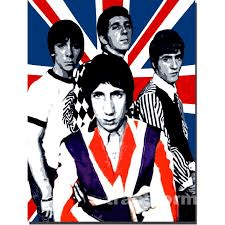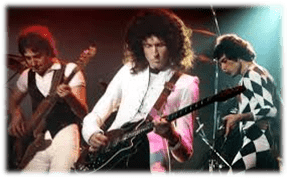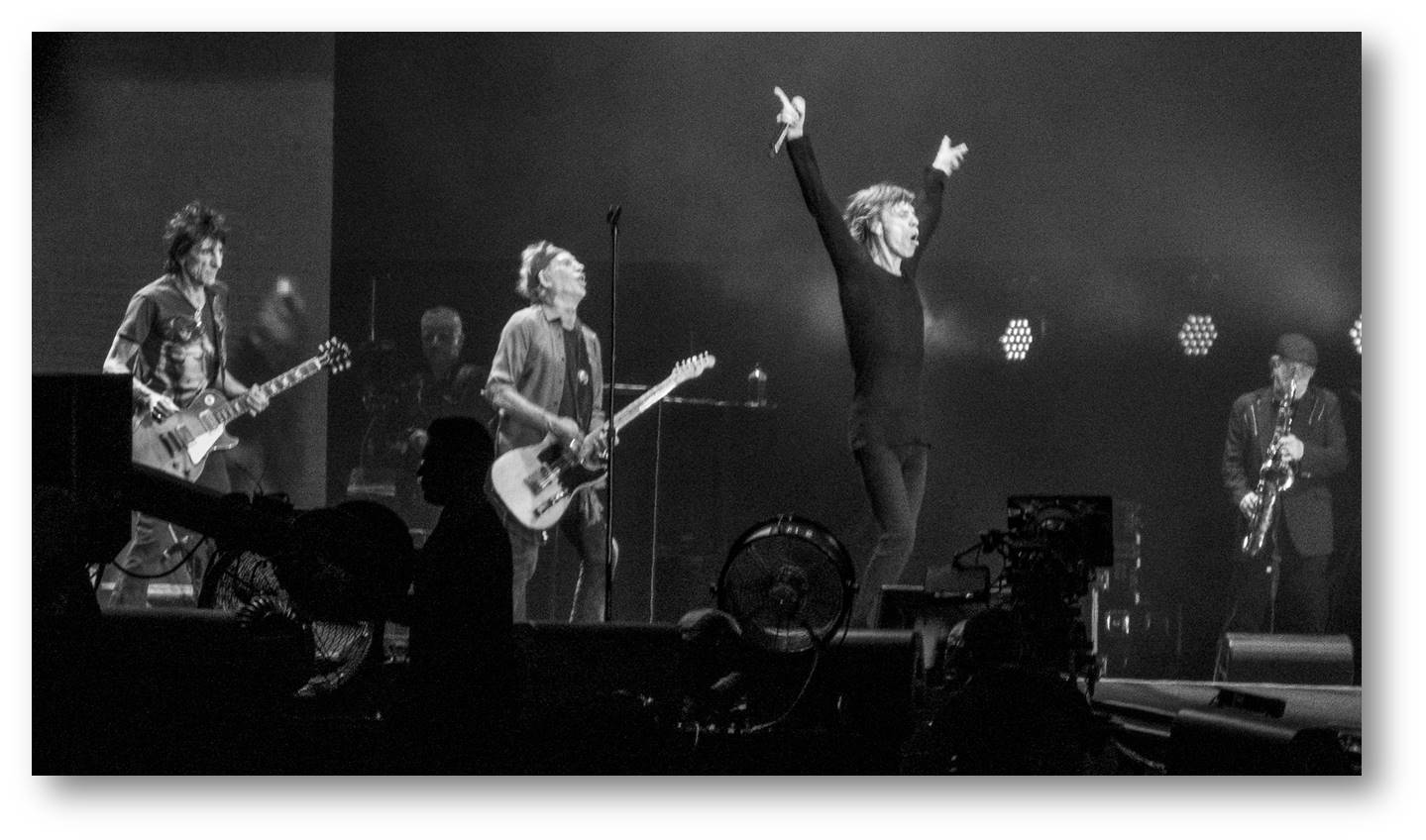You know that old Who lyric – “Hope I die before I get old.” For Roger and Pete, Mick, Keith, Charlie, Sir Paul, Ringo, and many others, that wish has not come true. The aforementioned are bigger than life in 2015, still touring, with no end in sight. And it’s that way on the radio, too.
 The good news for Classic Rock and Classic Hits stations is that their overwhelmingly strong performance in Nielsen PPM ratings continues. The diary numbers look solid, too. Last week as the PPM March monthly reports rolled out, the trend line continued. The headline in Friday’s Inside Radio read “February Was No Fluke For Classic Rock,” as stations are rising at or near the top of the rankers in both 6+ and 25-54 adults.
The good news for Classic Rock and Classic Hits stations is that their overwhelmingly strong performance in Nielsen PPM ratings continues. The diary numbers look solid, too. Last week as the PPM March monthly reports rolled out, the trend line continued. The headline in Friday’s Inside Radio read “February Was No Fluke For Classic Rock,” as stations are rising at or near the top of the rankers in both 6+ and 25-54 adults.
Nielsen called it the same way. In their look back at last month’s results, here is their observation about what’s going on with the Classic Rock format:
“Classic Rock is also on the upswing this month, setting new records for share of audience across each of the major listener groups we profile. Already on a high in February, the format broke last month’s records among audiences 6+ (with a 5.2% share in March), 18-34 (4.6%) and 25-54 (5.7%).”
How to explain this success as the format starts its fourth decade on the FM dial this month? While everyone has their theories, from Country’s stumble to Rock’s ongoing issues to black boxes in the rack room, there is clearly a younger demo strength that is solidifying, continuing to move the format away from the “demographic cliff.”
To get more clarity about what’s behind Classic Rock’s ascent, I turned to a guy who makes his living by investigating formats. Researcher Mark Kassof has been at it for decades, just down the road in Ann Arbor. He’s a respected research analyst and I would also call him a “formatician” because his studies focus on trends in formats and the stories behind the numbers.
Mark was kind enough to answer our questions about what’s up with Classic Rock – or better put, why Classic Rock is up and why now?
Fred: You’ve been conducting research on all the key formats for years. What is it about Classic Rock that makes it a unique format?
Mark: Classic Rock plays music that goes back to the ’60s and typically nothing from the past 20 years, yet has significant appeal to listeners born when its music was already decades old! In our research, 18-24 men are usually among the Classic Rock station’s biggest supporters, and have been for years. Amazing.
I often tell the story of my (then) 17-year-old stepson when he said back in the ‘90s: “Mark, have you ever heard of a group called The Doors? They’re really hot!” Younger listeners are continually discovering this music.
 Fred: Gold-based formats typically start strong, but are difficult to sustain. Classic Rock has now endured as a radio format for 30 years. How does your research explain its sustainability?
Fred: Gold-based formats typically start strong, but are difficult to sustain. Classic Rock has now endured as a radio format for 30 years. How does your research explain its sustainability?
Mark: Well, Classic Rock’s ability to re-energize its demographics at the young end has a lot to do with it. But I also think the initial core of the format – now 45+ – is unusually committed to it. They’re convinced that Classic Rock was the greatest music ever, and they’re not tired of it, as our recent ListenerThink study of Classic Rock listeners found. Only 4% of 45-54’s Classic Rock listeners strongly agree that they’re “tired of Classic Rock,” and a mere 1% of 55-64’s do! They overwhelmingly disagree that they’re tired of Classic Rock.
Fred: Do you think Classic Rockers are different, is it that the music’s different, or is it something else?
Mark: Both. It really was an outstanding era of music. But I’ve also found that there’s a psychological difference with Classic Rock P1s is that – as a group – they’re more disconnected from and more likely to reject current pop culture compared to others in the same demo. I’m not just talking about pop music, but all of pop culture – fashion, the Kardashians, etc.
Fred: Original Classic Rock stations didn’t play U2 as much back then, the ‘80s were like the ‘90s are today. Do you suspect that over time, bands like Nirvana, Pearl Jam, and the Red Hot Chili Peppers will gain acceptance among core Classic Rock fans?
Mark: I used to think so. Early on, it wasn’t uncommon for me to suggest Classic clients “play more ’80s,” and this was in the early ’90s. The format was evolving then, and I assumed that eventually the ’90s would kick in the very same way. But we’ve consistently found a resistance among at least half of Classic Rock listeners to ’90s rock.
We’ve seen it for years in our strategic studies and in focus groups. Sit down with a group of Classic Rock listeners and ask them if Nirvana qualifies as Classic Rock. Typically, around half say “no way,” even though we’re now 20+ years removed from Nirvana.
What happened in the ’90s is that the sound of rock changed. Sure, ’90s Aerosmith sounded pretty much like ’70s and ’80s Aerosmith. But grunge – artists like Nirvana, Pearl Jam, Stone Temple Pilots, etc. – is seen by many Classic Rockers as something else entirely, as is Alternative music in general.
Our latest study of Classic Rock listeners nailed it down. They define Classic Rock as being ’70s, ’80s and ’60s rock in that order. Few include ’90s. And their enthusiasm about the eras declines dramatically once we hit the ’90s. Finally, when we specifically asked about performers and whether they are “Classic Rock or Not?,” fewer than half regard artists that emerged in the ’90s as Classic.
 Fred: Do you think the Classic Rock format’s success is due to how great that music turned out to be or more of a statement about today’s music?
Fred: Do you think the Classic Rock format’s success is due to how great that music turned out to be or more of a statement about today’s music?
Mark: I think it’s mainly about the quality of the music, but not entirely so. What’s happening in new music does affect it. Classic Rock becomes stronger when new music becomes weaker.
And vice-versa. That’s what we observed a few years ago when a bunch of folkier artists – Mumford, Fun, Lumineers, Of Monsters and Men, etc. – became popular, even on some Rock stations. At the time, they were quite strong and we noted a decline in Classic Rock genres…still strong, but not as strong, and aging. I wondered: Is this the beginning of the end???
But then that movement didn’t sustain and Classic Rock rose to the forefront strong as ever…where we’re at right now.
Fred: How does your research explain the growing younger generation appeal of Classic Rock? And how unique is this?
Mark: Part of it, I think, is the culture and Classic Rock’s ongoing role in it. I mean, when Cadillac launched the CTS in ’03, they used Led Zeppelin’s “Rock and Roll” as the commercial’s soundtrack. Rock and Roll wasn’t my image of Cadillac then, but that was the whole point I’m sure…to make Caddy seem hipper with a song that was two decades old.
That’s just one example, Classic Rock has been used in so many movies, TV shows and ad campaigns that even if one wasn’t around when the music was new, it’s familiar.
My office is about a block away from the University of Michigan campus. So here we are surrounded by young people and you go in restaurants and stores and often hear Classic Rock. This music has never gone away.
Even the artists haven’t all gone away. I mean, the Rolling Stones are touring right now, and Jagger’s 70+! That’s the guy who said he’d rather die than be 45 and still singing “Satisfaction”!
Finally, I think it’s the music itself. It rocks, and a lot of younger guys want to rock. The fact it’s decades old doesn’t matter…it’s timeless.
Fred: Classic Rock, like Oldies, has had to face a lot of talk about the “demographic cliff.” Yet, Nielsen shows that (in PPM markets) Classic Rock is setting ratings records. What do see in your crystal ball?
Mark: Conventional wisdom would suggest that the format’s core audience is 45+ and they’ll continue to age out of the money demo. The influx of 18-24’s can’t completely hold that off…I find their interest fades somewhat when they reach 25-34.
All that said, Classic Rock has “defied gravity” for so long that I certainly wouldn’t write off its future prospects. The format has years left and I wouldn’t hesitate for a second to recommend it as a format option when it’s the strongest available.
We know that music moves in cycles – and Country, Pop, Alternative, Hip-Hop, and Rock all have their ebbs and flows. But the Classic Rock format is different in that it is not dependent on its own new music to sustain itself.
As the Stones’ “Zip Code” tour rolls on this year, we will be watching this very carefully.
Here are Mark’s three posts about Classic Rock:
“Classic Rock – Tasty, Not Crispy”
“Era Defines Classic Rock Most”
“’90s Sticking Point For Classic Rock”
- What To Do If Your Radio Station Goes Through A Midlife Crisis - April 25, 2025
- A 2020 Lesson?It Could All Be Gone In A Flash - April 24, 2025
- How AI Can Give Radio Personalities More…PERSONALITY - April 23, 2025





Rock On! Best show wins. Winning records, last!! Thanks, Fred.
Thanks, Clark!
The problem is you will hit a wall demographically with Classic Rock. Younger Classic Rock partisans want 90’s rock/alternative,older Classic Rock partisans don’t. The format will crater from a sales perspective unless changes are made, I remember when I first got into the business Music of Your Life stations were having great numbers too, but they were all 55+ The format will likely splinter into a younger and older version,as the aging of the generation born in the 70’s will require their music.
Maybe, maybe not. People were writing off the format 2-3 years ago, and then the younger demo appeal solidified. I think the difference between somewhat homogenous Boomer tastes (we all grew up listening to the same three radio stations) and twentysomethings today is that their tastes are much more fragmented across several different genres. I agree with you, Bob, that the long-term signs are pointing to a format that has strong generational appeal – and those people are aging. That is undeniable. That said, you might also want to read Curt Kraft’s comment as well.
Good read Mr. Jacobs. I’ve been thinkin’ and seeing the numbers on a Classic Hits Online Station. I concur with your findings. L
Thanks – and I love when Classic Rock kudos come from anyone but me!
When is the broadcasting business going to wake up and realize that older demos are viable too? And according to studies they have money to spend. Why not go after them with a 50’s & 60’s oldies format? If done correctly, (i.e. large playlist and live, local jocks) it would be a money maker. I know, the ad agencies don’t want it. Well, if that’s the case then why are so many oldies being played in tv commercials? For example, Geico using an obscure Roy Orbison tune. “Ride Away” from 1965. Or Yoplait using the Kinks 1965 hit, “All Day And All Of The Night.” There are other examples as well. To me, older demos are an untapped goldmine. Time to do some prospecting.
True, Curt. When is radio going to sell to the prospect that brands invested billions to get us (67) onboard for four decades, yet now, rather than protect that investment, they’re blowing the whole wad on younger demos that aren’t as easily convinced as we were. Allotting a substantial percentage of resources to 55+ would be the smart play.
Thanks, Jim, for that perspective. You’d think that with all those radio stations in most markets, there would be room for stations to succeed at both ends of the demographic spectrum.
I recently noticed the kind of numbers Classic Rock Stations are getting and was shocked. Usually, in fact almost always, when a format gets hot something different is happening musically. By definition, that can’t be the case here.
Imagine boomers listened to music from 40 years earlier when classic rock was new rock. That would be Fred and Paul listening to music from the 1930s when they were in college.
Is it true that the 90s partisans are the younger end? If that’s true the path is clear – move in that direction, let the purists age out of the format and complain that radio sucks now. But that isn’t clear from what I’ve seen and if it isn’t there is no apparent path to focusing on say, 35-54.
Older demos are probably not ever going to be viable for radio. Radio has enough trouble selling radio stations with big 25-54 numbers, selling a demo that buyers never wanted is probably not going to work. I’m not sure that’s true for younger demos. Buyers want them everywhere but on radio and that’s a prejudice that’s worth fighting and could be changed.
I never understood the haters when it came to classic rock. Its nice to see the timeless greatness of the music filtering down.
Indeed it is, Bob. You were an early supporter and reaped the benefits. It’s been a great run, and even more satisfying now that the numbers are at all-time highs. Thanks for the support over the years & the kind words. And BTW, you are right – it is unimaginable to think of being in college and liking what my parents were listening to. Then again, it is unimaginable to think that living at home with them in my 20s was a good idea. Things have changed!
To Curt’s point: Maybe the problem is NOT that older demos don’t respond to advertising and are therefore irrelevant to advertisers. Maybe stations catering to those demos (and clients who would advertise their products there) should think about new non-traditional WAYS to effectively advertise to those demos.
Could it be that older demos fail to respond to advertising messages like they did when they were younger because the ads themselves are either insulting to their more mature sensibilities and/or simply not compelling enough?
Generating creative content should not apply to programming alone, but also to advertising. You can’t just phone it in.
Good points. The older demo paradox is an agency issue that broadcasters too often accept as fact. But better creative wouldn’t hurt!